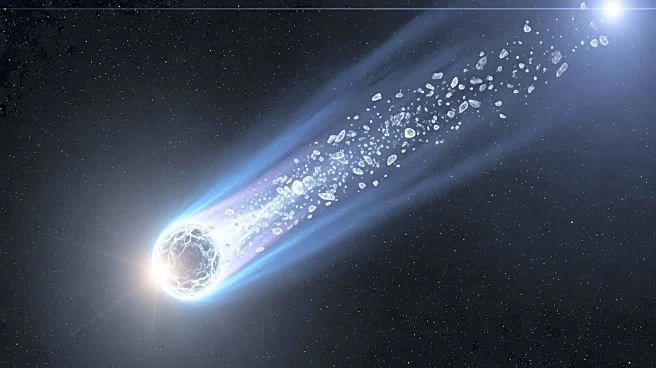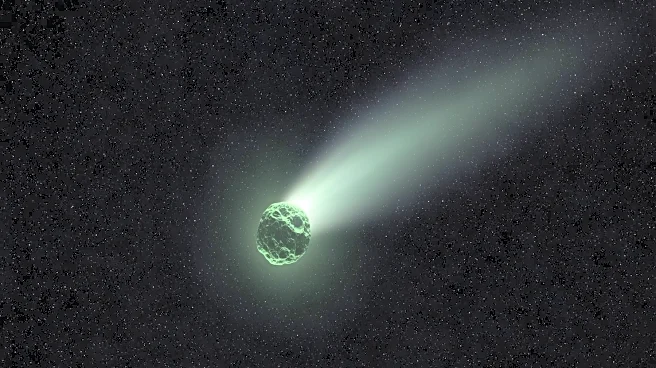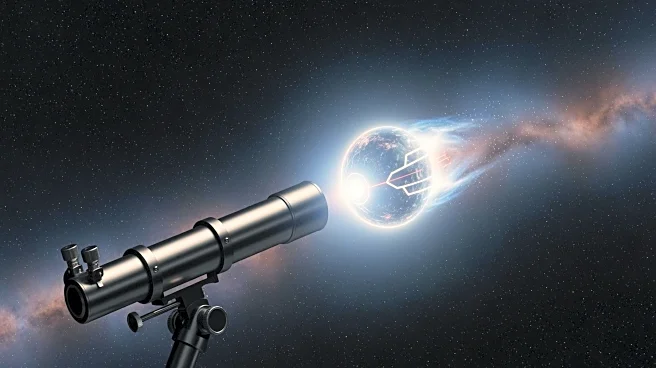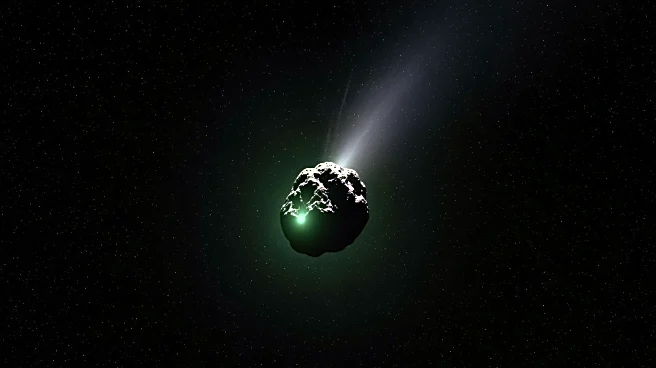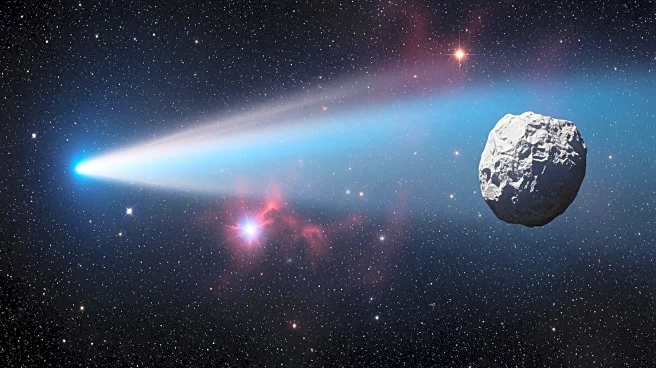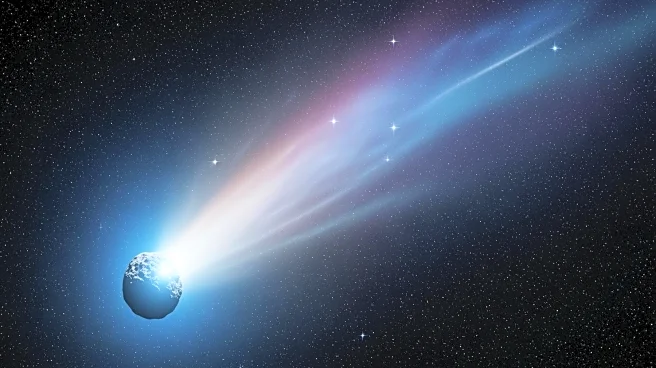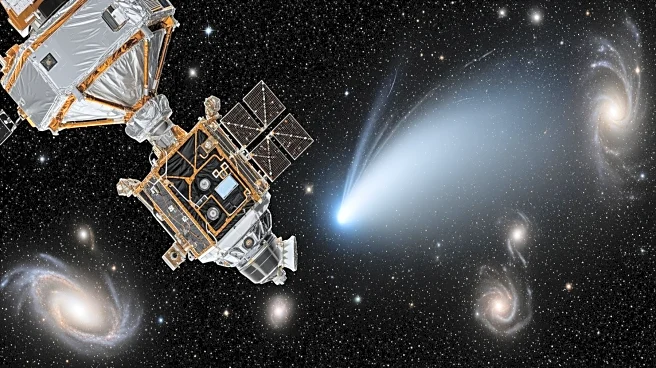What's Happening?
Interstellar comet 3I/Atlas is set to reappear in the eastern sky before dawn on November 11, 2025. This rare cosmic event has captured the attention of skywatchers and astronomers globally. The comet,
discovered on July 1, 2025, by the ATLAS telescope in Chile, is only the third confirmed interstellar object to visit our solar system, following 'Oumuamua in 2017 and 2I/Borisov in 2019. Recently, 3I/Atlas completed its closest approach to the Sun, known as perihelion, on October 30, passing within 130 million miles of the star. NASA and the European Space Agency (ESA) are closely monitoring its trajectory using advanced tracking instruments. The comet is on a hyperbolic orbit, meaning it is not gravitationally bound to the Sun and will continue its journey into deep space after its passage through the solar system.
Why It's Important?
The reappearance of 3I/Atlas offers a unique opportunity for astronomers to study interstellar material, potentially providing insights into the formation of planets and solar systems beyond our own. As the comet approaches the Sun, its frozen gases are sublimating, releasing dust and ice into space, which forms a faint tail. Instruments aboard ESA's JUICE spacecraft are being used to analyze these materials, which are composed largely of frozen water, carbon compounds, and dust. Understanding the composition and behavior of interstellar objects like 3I/Atlas can enhance scientific knowledge about the building blocks of celestial bodies and the dynamics of objects originating from outside the Milky Way.
What's Next?
On November 11, 2025, 3I/Atlas is expected to become visible again in the eastern pre-dawn sky, although it will not be visible to the naked eye. Skywatchers will need a large telescope to observe the comet, which will appear near the constellation Sagittarius. NASA, ESA, and various university-led telescope networks are providing live stream feeds and real-time sky maps for those unable to view the phenomenon directly. As the comet continues its passage through the solar system, scientists from NASA and ESA will coordinate data collection to deepen their understanding of interstellar material.
Beyond the Headlines
The comet's mysterious origin, possibly from a star system beyond the Milky Way's central region, has sparked speculation about its nature. While Harvard astrophysicist Avi Loeb initially suggested an artificial origin, he has since stated that the comet is most likely natural. The study of 3I/Atlas may reveal long-term shifts in our understanding of interstellar objects and their role in the cosmos.


